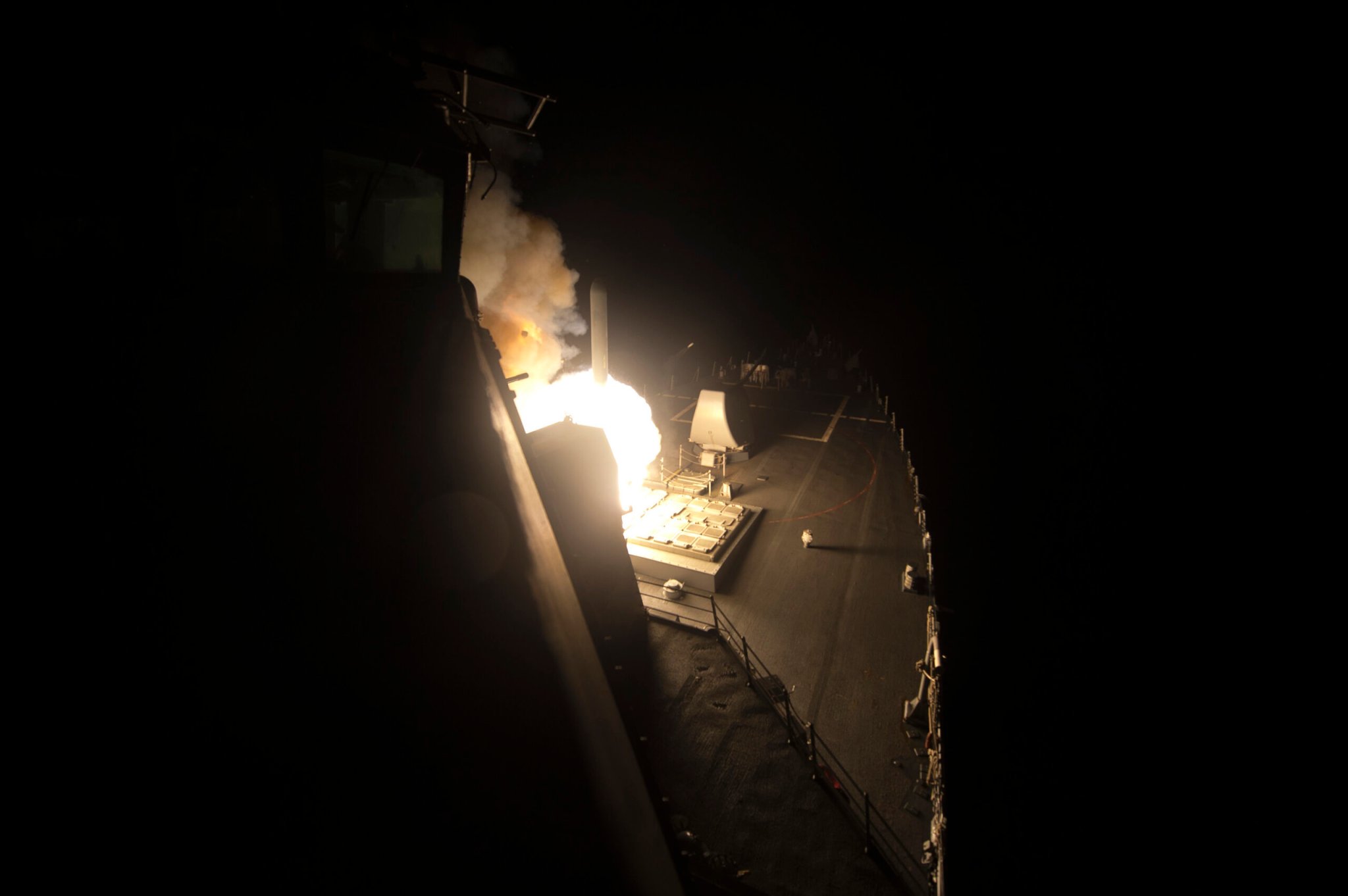

U.S. and British forces conducted airstrikes on Thursday against Iranian-backed Houthi rebels in Yemen, which have launched 27 attacks on international shipping since Nov. 19, President Joe Biden has announced
Australia, Bahrain, Canada, and the Netherlands also supported Thursday’s operation, Biden said in a statement.
“Today’s defensive action follows this extensive diplomatic campaign and Houthi rebels’ escalating attacks against commercial vessels,” Biden said. “These targeted strikes are a clear message that the United States and our partners will not tolerate attacks on our personnel or allow hostile actors to imperil freedom of navigation in one of the world’s most critical commercial routes. I will not hesitate to direct further measures to protect our people and the free flow of international commerce as necessary.”
The strikes involved manned aircraft from the U.S. Navy and Air Force along with the United Kingdom, a senior military official told reporters on Thursday.
The operation also involved “surface and subsurface platforms,” said the senior military official, who did not specify how many ships and submarines took part in the mission. CNN has reported that Tomahawk cruise missiles were used in the attack.
Subscribe to Task & Purpose today. Get the latest military news and culture in your inbox daily.
“Precision-guided munitions were used to destroy the targets, and also to minimize collateral damage,” said the senior military official, who spoke on condition of anonymity under rules established by the White House.
Thursday’s strikes destroyed “multiple targets,” said the senior military official, who had no information on exactly how many targets were struck or how effective the strikes were.
The targets were specifically selected to focus on the Houthis’ missile, radar, and drone capabilities, which have played an essential role in their attacks on shipping in international waters, said a senior administration official.
“There is no intent to escalate the situation,” the senior administration official said.
U.S. Navy ships and aircraft have shot down dozens of drones, ballistic missiles, and cruise missiles launched by the Houthis against merchant shipping. The crew of the destroyer USS Carney was awarded the Combat Action Ribbon earlier this month for its role in stopping Houthi attacks.
On Jan. 3, the United States and 12 other nations warned Houthi rebels that they would “bear the responsibility of the consequences” if they continued to attack merchant shipping.
The Houthis are part of a group of Iranian proxies known as the “Axis of Resistance” that includes groups that have attacked U.S. troops in Iraq and Syria since Hamas launched its Oct. 7 terror attack on Israel.
As of Thursday, American forces in Iraq and Syria had come under attack 130 times, said Air Force Maj. Gen. Pat Ryder, a Pentagon spokesman. That breaks down to 53 attacks in Iraq and 77 in Syria. One attack in Iraq critically injured a pilot with the 82nd Airborne Division.
Thursday’s U.S. and British strikes against the Houthis were widely telegraphed by British media earlier in the day.
During a Pentagon news briefing on Thursday afternoon, Ryder told reporters that he would not speculate about future military action.
“I’m just not going to talk about readiness other than to say we have the capabilities and the capacity to do what we need to do to execute the missions that we’ve been assigned,” Ryder said.
As of Thursday evening, no direct Houthi attacks against American and coalition forces in the Middle East had been reported, said the senior military official, who added that U.S. forces remain prepared to defend themselves.
The senior administration official reiterated Biden’s pledge to take further measures if needed.
“So, this may well not be the last word on the topic,” the senior administration official said. “When we have more to say and more to do, you will hear from us.”
The latest on Task & Purpose
- What is the oldest military equipment still in use today?
- Arkansas Air Guard wing commander resigns over abortion policy, Governor says
- Marine Security Guard dies in Republic of the Congo
- How the military celebrates the New Year, according to combat veterans
- The history of Thompson “Tommy” guns at war
